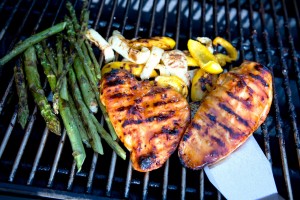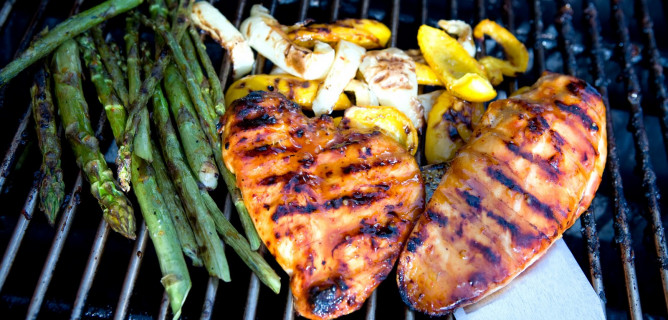 From backyard barbeques to picnic cookouts, Americans celebrate summer by eating outdoors. As Americans turn to grilling alfresco, keep the following five food safety tips in mind, to ensure safe and memorable summer grilling experiences.
From backyard barbeques to picnic cookouts, Americans celebrate summer by eating outdoors. As Americans turn to grilling alfresco, keep the following five food safety tips in mind, to ensure safe and memorable summer grilling experiences.
“In professional kitchens, trained staff and multiple safeguards ensure that food safety protocol is followed, but at home it’s easy to let food safety practices be as casual as the food you are cooking on the grill,” says Greg Beachey, senior academic relations and program manager with the National Restaurant Association Educational Foundation.
“Food safety is as important in the home as it is in restaurants to ensure safe and enjoyable meals for you and your family and friends. To underscore that importance, we collected tips from our professional food safety training experts and applied them to outdoor grilling at home or picnics.”
The food safety tips recommended by the NRA for grilling at home are:
1. Wash your hands. Hand-washing is the first defense against cross-contamination – i.e. not spreading germs from one place to another. Wash hands before handling any food, and always after handling raw meats. To wash your hands properly, wet hands/arms with water as hot as you can comfortably stand; add soap; scrub hands/arms for 10 to 15 seconds (the time it takes to slowly recite aloud the “Pledge of Allegiance”); rinse with warm water; and dry hands with a single-use paper towel or hand-dryer, if available.
2. Pack your cooler correctly. Always keep cold foods cold; use a thermometer to make sure you are maintaining a temperature of 41°F or lower. Pack raw food that you intend to cook (like raw hamburgers) in a separate cooler from food that is already cooked and ready to eat, including beverages and produce. If you use ice in your raw foods cooler, don’t use that ice for anything else.
3. Prep raw and ready-to-eat foods separately. Use separate cutting boards and other prep surfaces for raw and cooked food to minimize cross-contamination risk. A good way to remember which is which is to use different colored boards, for example red for meats and green for vegetables.
4. Use separate plates and utensils for raw and cooked foods. After putting raw burgers, chicken breasts or other meats on the grill, switch to clean spatulas, tongs and plates. Using the same utensils and surfaces for uncooked and cooked meats could lead to cross-contamination.
5. Cook food to safe temperatures. Raw meat and poultry could contain bacteria that can lead to food borne illness if not properly cooked. Because heat kills bacteria, be sure to cook hamburgers to an internal temperature of 155°F for at least 15 seconds. Chicken and turkey are safe at 165°F, and steaks and chops at 145°F. Always use a meat thermometer and measure the middle of the thickest part of the food.
Source: www.nraef.com.
Courtland Building Company would love to help you plan your green home, call us today: (281) 932-4494
Visit our website: www.courtlandbuildingcompany.com Follow Us on Facebook – Twitter – LinkedIn


